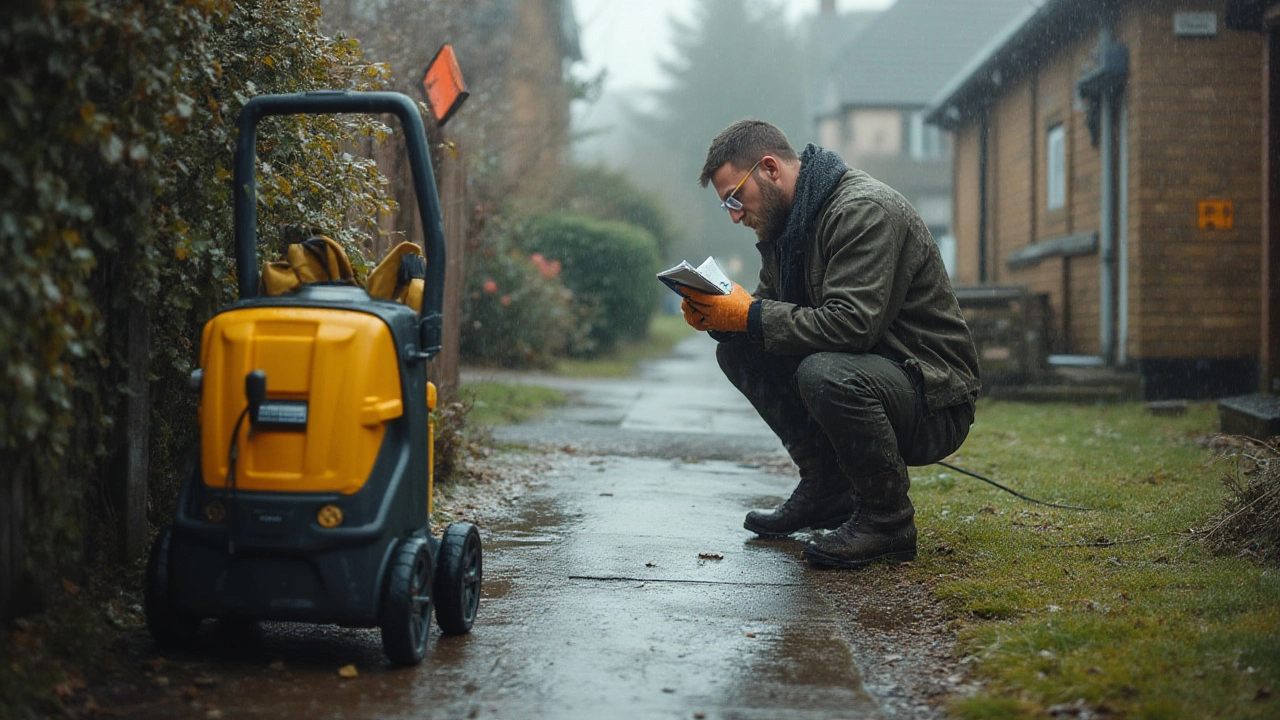Pressure Washing Safety: What You Need to Know Before You Start
Pressure washing can make a driveway, deck, or siding look brand new, but it can also be risky if you ignore safety basics. A few simple steps can keep you safe, protect your home, and give better results.
Gear Up Right
First thing – put on the right protective gear. A pair of non‑slip shoes, safety glasses, ear plugs, and gloves are a must. The water jet can bounce off hard surfaces and hit your eyes, so goggles are non‑negotiable. Ear protection matters because many pressure washers are loud enough to damage hearing over time.
If you’re using a gas‑powered unit, wear long sleeves and pants to shield skin from hot spray and flying debris. A hat or head‑cover helps keep water out of your hair and prevents the spray from slipping down your face.
Set Up and Use the Machine Safely
Read the manual before you fire up the washer. Check all hoses, connections, and the nozzle for cracks or wear. A leaking hose can slip, causing a sudden loss of pressure and a possible burst.
Start with the lowest pressure setting. Many people think higher pressure means faster cleaning, but it also increases the chance of injury or surface damage. Test the spray on a hidden spot first; if the surface erodes or the paint lifts, lower the pressure or switch to a wider‑angle nozzle.
Never point the nozzle at people, pets, or electrical outlets. The force can penetrate skin or push water into live wires, resulting in shock or burns. Keep the wand at least a foot away from anything that could break or ignite.
When working on roofs or ladders, always use a harness or stable platform. A slip while holding a heavy hose can cause serious falls. If the job requires height, consider hiring a professional instead of risking it yourself.
Watch the weather. Rain or high winds can change how water spreads, making it harder to control spray direction. Also, avoid using hot water on surfaces that can crack, like old tiles or fragile wood.
After cleaning, turn off the machine before you detach the hose. This prevents sudden water bursts that could spray you or damage the equipment.
Handle Chemicals and Waste Properly
Many cleaners add chemicals to boost stain removal. Follow the product label for the correct dilution – mixing too much can create toxic fumes or damage plants. Store chemicals in a locked cabinet away from kids and pets.
When rinsing, aim the runoff away from garden beds, storm drains, or neighbors’ property. Harsh cleaners can harm plants and pollute waterways. If you need to wash a large area, use a low‑phosphate detergent and collect the runoff in a bucket for proper disposal.
Finally, clean the washer after each use. Run clean water through the system, wipe down the wand, and store the unit in a dry place. A well‑maintained washer lasts longer and works more safely.
By following these straightforward safety steps – gear up, set up correctly, watch the pressure, and treat chemicals responsibly – you can enjoy the power of pressure washing without the headaches. Stay safe, clean smart, and let your home shine.

Pressure Washing Business Risks: Everything You Must Know Before Starting Up
Discover the real risks and challenges of starting a pressure washing business. Learn about safety, legal, financial, and market hurdles to make smarter choices before you launch.
Read More